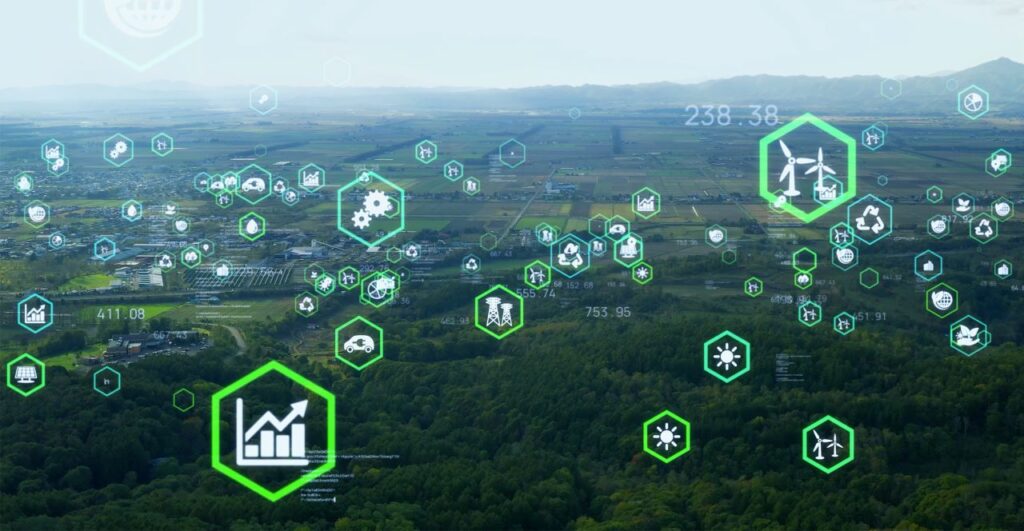
As 5G deployments increase and data demands skyrocket, optimizing overall power consumption becomes increasingly important to maximize the economic and environmental benefits of the Radio Access Network (RAN), which accounts for approximately 80% of the power consumption in a mobile network. By focusing on energy-efficient practices, particularly within the 5G RAN and leveraging Open RAN initiatives, Mobile Network Operators (MNOs) can further reduce operating expenses while ensuring that 5G’s transformative potential is realized in the most sustainable way possible.
Innovations that enhance Open RAN energy efficiency
One of the standout features of Open RAN is RAN virtualization. By centralizing RAN computing power, we can optimize capacity and reduce power usage. Plus, the standardization and openness of Open RAN spur even more innovation and competition, driving new, energy-saving solutions.
By adopting Open RAN, Mobile Network Operators (MNOs) gain a new advantage for reducing energy consumption and costs. Leaving aside the ease with which older, power-hungry hardware can be swapped out for new, energy-efficient equipment, Open RAN supports various power-reduction tools and methods, some of them incorporated into the specifications.
How Open RAN architecture enables energy efficiency
Open RAN’s architecture consists of three planes: the User-plane (U-plane), Control-plane (C-plane), and Management-plane (M-plane). These work together to manage, control, and operate the network efficiently. The architecture provides ways to implement increasingly sophisticated power management on the M-plane and C-plane.
M-plane energy efficiency
M-plane control reduces RU power consumption by temporarily deactivating unused Multiple Input Multiple Output (MIMO) chains when they are not needed. For example, a 4T4R radio can deactivate antenna elements and operate in a 2T2R or 2T4R configuration during low traffic periods.
The O-RAN specification defines Transceiver (TRx) control within the M-plane, which reduces power consumption by dynamically activating and deactivating radio resources such as radio frequency bands, antenna ports, and beams.
C-plane energy efficiency
C-plane control enables more granular power control in real-time, with significant overall effect on power consumption. With C-plane control, power consumption is managed by controlling the operating mode of the base station and radio resource allocation based on the communication state and quality of service (QoS) requirements.
TRx control and Advanced Sleep Mode (ASM) are standardized as low power consumption methods within C-plane control. TRx control activates or deactivates antenna elements, while ASM decides when this activation or deactivation should occur.
Emerging approaches to Open RAN energy efficiency
C-plane control affords some promising avenues for improving RAN energy efficiency, but there is still room for improvement. Other possibilities for next-generation power control, include those linked to gNB (next-generation NodeB) and the RAN Intelligent Controller (RIC), as well as power control technologies in the frequency domain.
Technologies linked to gNBs and RICs: The problem with the current low-power specifications is that they only specify how to control the duration of low-power operation and cannot predict what the actual reduction in power consumption will actually be achieved. To optimize power efficiency, a system that can analyze, predict, and control low power control time according to traffic volume and actual power consumption measurements is necessary. This will require the RU (Radio Unit) to communicate with the RIC via the DU (Distributed Unit) and CU (Central Unit).
The RIC consists of two components: the non-real time (non-RT) RIC and the near-real time (near-RT) RIC. The non-RT RIC uses data such as traffic patterns and QoS requests for long-term RAN optimization, while the near-RT RIC uses real-time data for short-term RAN control. The RIC can configure and direct lower power consumption through RU operating modes and ASM (Advanced Sleep Mode) parameters. RIC controls are coordinated with the gNB CU/DU. The CU/DU receives instructions from the RIC and communicates them to the RU. By collecting feedback from the RU, such as power consumption and communication status, the CU/DU working in conjunction with the RIC apps can improve energy efficiency control accuracy and effectiveness.
Frequency-domain power control technology: While control for TDD systems has been standardized along with per-antenna control, power reduction technologies in the frequency domain have not yet been standardized. Frequency-domain power control techniques optimize power consumption by limiting the frequency range transmitted by the RU during periods of low traffic.
For example, 5G NR allows multiple component carriers (CCs) to be combined for different frequency bands. The RU can change the number of CCs or PRBs (Physical Resource Blocks) used depending on traffic volume and QoS requirements. The RU can reduce power consumption by temporarily deactivating unused CCs and PRBs. However, switching from one CC or PRB to another incurs overhead so power control technology in the frequency domain must balance reducing power consumption and maintaining communication quality.
Overall, power control technology in the frequency domain is expected to achieve better energy efficiency when used in combination with ASM and TRx (Transceiver) control.
Realizing the transformative potential of Open RAN
5G is revolutionizing mobile communication with unparalleled data rates and higher energy efficiency per bit. But with operators facing continued growth in demand, focus on energy efficiency becomes critical to cost control and sustainability, particularly in the 5G RAN. O-RAN architecture provides mechanisms to reduce power consumption and operating expenses, helping to ensure that 5G’s transformative potential is realized. As O-RAN and its developer ecosystem matures, new power-efficient and sustainable innovations will enter the market.